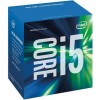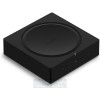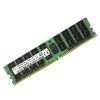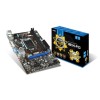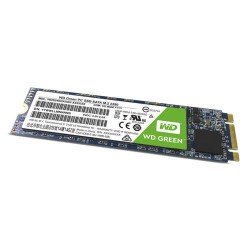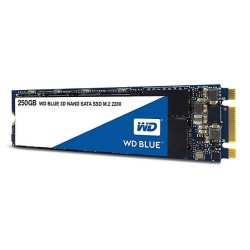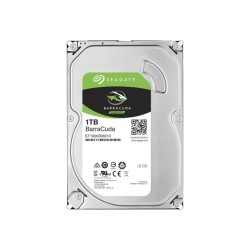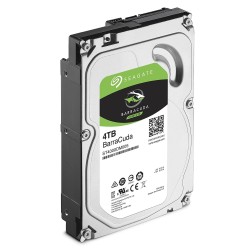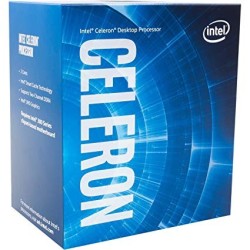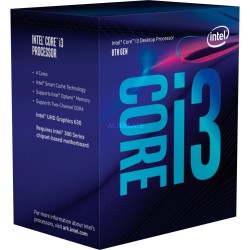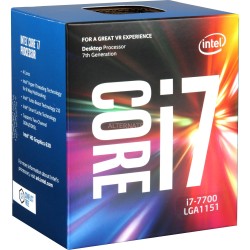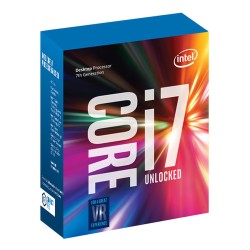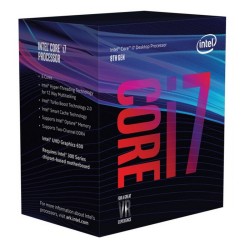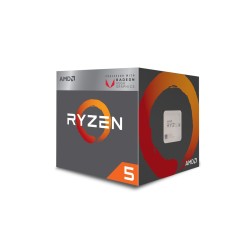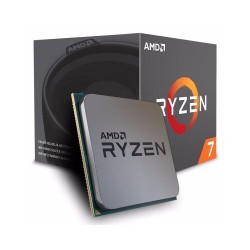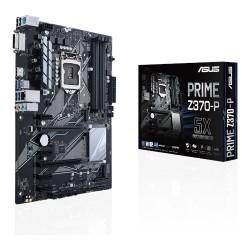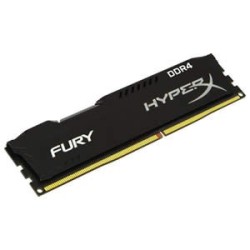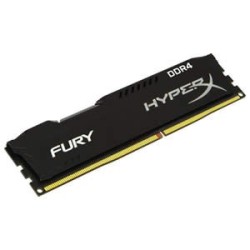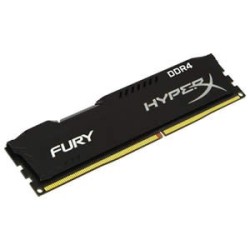Specifications
Compatible Products
Find Compatible Desktop Boards
Find boards compatible with the Intel® Core™ i5-7400 Processor in the Intel® Desktop Compatibility Tool
Product Images


Ordering and Compliance
Ordering and spec information
Boxed Intel® Core™ i5-7400 Processor (6M Cache, up to 3.50 GHz) FC-LGA14C
- Spec Code SR32W
- Ordering Code BX80677I57400
- Shipping Media BOX
- Step B0
- RCP $182.00
Boxed Intel® Core™ i5-7400 Processor (6M Cache, up to 3.50 GHz) FC-LGA14C, for China
- Spec Code SR32W
- Ordering Code BXC80677I57400
- Shipping Media BOX
- Step B0
Intel® Core™ i5-7400 Processor (6M Cache, up to 3.50 GHz) FC-LGA14C, Tray
- Spec Code SR32W
- Ordering Code CM8067702867050
- Shipping Media TRAY
- Step B0
- RCP $182.00
Trade compliance information
- ECCN5A992C
- CCATSG077159
- US HTS8542310001
Downloads and Software
Launch Date
The date the product was first introduced.
Lithography
Lithography refers to the semiconductor technology used to manufacture an integrated circuit, and is reported in nanometer (nm), indicative of the size of features built on the semiconductor.
Recommended Customer Price
Recommended Customer Price (RCP) is pricing guidance only for Intel products. Prices are for direct Intel customers, typically represent 1,000-unit purchase quantities, and are subject to change without notice. Prices may vary for other package types and shipment quantities. If sold in bulk, price represents individual unit. Listing of RCP does not constitute a formal pricing offer from Intel.
# of Cores
Cores is a hardware term that describes the number of independent central processing units in a single computing component (die or chip).
# of Threads
A Thread, or thread of execution, is a software term for the basic ordered sequence of instructions that can be passed through or processed by a single CPU core.
Processor Base Frequency
Processor Base Frequency describes the rate at which the processor's transistors open and close. The processor base frequency is the operating point where TDP is defined. Frequency is measured in gigahertz (GHz), or billion cycles per second.
Max Turbo Frequency
Max turbo frequency is the maximum single core frequency at which the processor is capable of operating using Intel® Turbo Boost Technology and, if present, Intel® Thermal Velocity Boost. Frequency is measured in gigahertz (GHz), or billion cycles per second.
Cache
CPU Cache is an area of fast memory located on the processor. Intel® Smart Cache refers to the architecture that allows all cores to dynamically share access to the last level cache.
Bus Speed
A bus is a subsystem that transfers data between computer components or between computers. Types include front-side bus (FSB), which carries data between the CPU and memory controller hub; direct media interface (DMI), which is a point-to-point interconnection between an Intel integrated memory controller and an Intel I/O controller hub on the computer’s motherboard; and Quick Path Interconnect (QPI), which is a point-to-point interconnect between the CPU and the integrated memory controller.
# of QPI Links
QPI (Quick Path Interconnect) links are a high speed, point-to-point interconnect bus between the processor and chipset.
TDP
Thermal Design Power (TDP) represents the average power, in watts, the processor dissipates when operating at Base Frequency with all cores active under an Intel-defined, high-complexity workload. Refer to Datasheet for thermal solution requirements.
Embedded Options Available
Embedded Options Available indicates products that offer extended purchase availability for intelligent systems and embedded solutions. Product certification and use condition applications can be found in the Production Release Qualification (PRQ) report. See your Intel representative for details.
Max Memory Size (dependent on memory type)
Max memory size refers to the maximum memory capacity supported by the processor.
Memory Types
Intel® processors come in four different types: a Single Channel, Dual Channel, Triple Channel, and Flex Mode.
Max # of Memory Channels
The number of memory channels refers to the bandwidth operation for real world application.
ECC Memory Supported ‡
ECC Memory Supported indicates processor support for Error-Correcting Code memory. ECC memory is a type of system memory that can detect and correct common kinds of internal data corruption. Note that ECC memory support requires both processor and chipset support.
Processor Graphics ‡
Processor Graphics indicates graphics processing circuitry integrated into the processor, providing the graphics, compute, media, and display capabilities. Intel® HD Graphics, Iris™ Graphics, Iris Plus Graphics, and Iris Pro Graphics deliver enhanced media conversion, fast frame rates, and 4K Ultra HD (UHD) video. See the Intel® Graphics Technology page for more information.
Graphics Base Frequency
Graphics Base frequency refers to the rated/guaranteed graphics render clock frequency in MHz.
Graphics Max Dynamic Frequency
Graphics max dynamic frequency refers to the maximum opportunistic graphics render clock frequency (in MHz) that can be supported using Intel® HD Graphics with Dynamic Frequency feature.
Graphics Video Max Memory
The maximum amount of memory accessible to processor graphics. Processor graphics operates on the same physical memory as the CPU (subject to OS, driver, and other system limitations).
4K Support
4K support indicates the product's support of 4K resolution, defined here as minimum 3840 x 2160.
Max Resolution (HDMI 1.4)‡
Max Resolution (HDMI) is the maximum resolution supported by the processor via the HDMI interface (24bits per pixel & 60Hz). System or device display resolution is dependent on multiple system design factors; actual resolution may be lower on your system.
Max Resolution (DP)‡
Max Resolution (DP) is the maximum resolution supported by the processor via the DP interface (24bits per pixel & 60Hz). System or device display resolution is dependent on multiple system design factors; actual resolution may be lower on your system.
Max Resolution (eDP - Integrated Flat Panel)‡
Max Resolution (Integrated Flat Panel) is the maximum resolution supported by the processor for a device with an integrated flat panel (24bits per pixel & 60Hz). System or device display resolution is dependent on multiple system design factors; actual resolution may be lower on your device.
DirectX* Support
DirectX indicates support for a specific version of Microsoft’s collection of API’s (Application Programming Interfaces) for handling multimedia compute tasks.
OpenGL* Support
OpenGL (Open Graphics Library) is a cross-language, multi-platform API (Application Programming Interface) for rendering 2D and 3D vector graphics.
Intel® Quick Sync Video
Intel® Quick Sync Video delivers fast conversion of video for portable media players, online sharing, and video editing and authoring.
Intel® InTru™ 3D Technology
Intel® InTru™ 3D Technology provides stereoscopic 3-D Blu-ray* playback in full 1080p resolution over HDMI* 1.4 and premium audio.
Intel® Clear Video HD Technology
Intel® Clear Video HD Technology, like its predecessor, Intel® Clear Video Technology, is a suite of image decode and processing technologies built into the integrated processor graphics that improve video playback, delivering cleaner, sharper images, more natural, accurate, and vivid colors, and a clear and stable video picture. Intel® Clear Video HD Technology adds video quality enhancements for richer color and more realistic skin tones.
Intel® Clear Video Technology
Intel® Clear Video Technology is a suite of image decode and processing technologies built into the integrated processor graphics that improve video playback, delivering cleaner, sharper images, more natural, accurate, and vivid colors, and a clear and stable video picture.
PCI Express Revision
PCI Express Revision is the version supported by the processor. Peripheral Component Interconnect Express (or PCIe) is a high-speed serial computer expansion bus standard for attaching hardware devices to a computer. The different PCI Express versions support different data rates.
PCI Express Configurations ‡
PCI Express (PCIe) Configurations describe the available PCIe lane configurations that can be used to link the PCH PCIe lanes to PCIe devices.
Max # of PCI Express Lanes
A PCI Express (PCIe) lane consists of two differential signaling pairs, one for receiving data, one for transmitting data, and is the basic unit of the PCIe bus. # of PCI Express Lanes is the total number supported by the processor.
Sockets Supported
The socket is the component that provides the mechanical and electrical connections between the processor and motherboard.
Thermal Solution Specification
Intel Reference Heat Sink specification for proper operation of this SKU.
TJUNCTION
Junction Temperature is the maximum temperature allowed at the processor die.
Intel® Optane™ Memory Supported ‡
Intel® Optane™ memory is a revolutionary new class of non-volatile memory that sits in between system memory and storage to accelerate system performance and responsiveness. When combined with the Intel® Rapid Storage Technology Driver, it seamlessly manages multiple tiers of storage while presenting one virtual drive to the OS, ensuring that data frequently used resides on the fastest tier of storage. Intel® Optane™ memory requires specific hardware and software configuration. Visit www.intel.com/OptaneMemory for configuration requirements.
Intel® Turbo Boost Technology ‡
Intel® Turbo Boost Technology dynamically increases the processor's frequency as needed by taking advantage of thermal and power headroom to give you a burst of speed when you need it, and increased energy efficiency when you don’t.
Intel® vPro™ Platform Eligibility ‡
Intel® vPro™ Technology is a set of security and manageability capabilities built into the processor aimed at addressing four critical areas of IT security: 1) Threat management, including protection from rootkits, viruses, and malware 2) Identity and web site access point protection 3) Confidential personal and business data protection 4) Remote and local monitoring, remediation, and repair of PCs and workstations.
Intel® Hyper-Threading Technology ‡
Intel® Hyper-Threading Technology (Intel® HT Technology) delivers two processing threads per physical core. Highly threaded applications can get more work done in parallel, completing tasks sooner.
Intel® Virtualization Technology (VT-x) ‡
Intel® Virtualization Technology (VT-x) allows one hardware platform to function as multiple “virtual” platforms. It offers improved manageability by limiting downtime and maintaining productivity by isolating computing activities into separate partitions.
Intel® Virtualization Technology for Directed I/O (VT-d) ‡
Intel® Virtualization Technology for Directed I/O (VT-d) continues from the existing support for IA-32 (VT-x) and Itanium® processor (VT-i) virtualization adding new support for I/O-device virtualization. Intel VT-d can help end users improve security and reliability of the systems and also improve performance of I/O devices in virtualized environments.
Intel® VT-x with Extended Page Tables (EPT) ‡
Intel® VT-x with Extended Page Tables (EPT), also known as Second Level Address Translation (SLAT), provides acceleration for memory intensive virtualized applications. Extended Page Tables in Intel® Virtualization Technology platforms reduces the memory and power overhead costs and increases battery life through hardware optimization of page table management.
Intel® TSX-NI
Intel® Transactional Synchronization Extensions New Instructions (Intel® TSX-NI) are a set of instructions focused on multi-threaded performance scaling. This technology helps make parallel operations more efficient via improved control of locks in software.
Intel® 64 ‡
Intel® 64 architecture delivers 64-bit computing on server, workstation, desktop and mobile platforms when combined with supporting software.¹ Intel 64 architecture improves performance by allowing systems to address more than 4 GB of both virtual and physical memory.
Instruction Set
An instruction set refers to the basic set of commands and instructions that a microprocessor understands and can carry out. The value shown represents which Intel’s instruction set this processor is compatible with.
Instruction Set Extensions
Instruction Set Extensions are additional instructions which can increase performance when the same operations are performed on multiple data objects. These can include SSE (Streaming SIMD Extensions) and AVX (Advanced Vector Extensions).
Idle States
Idle States (C-states) are used to save power when the processor is idle. C0 is the operational state, meaning that the CPU is doing useful work. C1 is the first idle state, C2 the second, and so on, where more power saving actions are taken for numerically higher C-states.
Enhanced Intel SpeedStep® Technology
Enhanced Intel SpeedStep® Technology is an advanced means of enabling high performance while meeting the power-conservation needs of mobile systems. Conventional Intel SpeedStep® Technology switches both voltage and frequency in tandem between high and low levels in response to processor load. Enhanced Intel SpeedStep® Technology builds upon that architecture using design strategies such as Separation between Voltage and Frequency Changes, and Clock Partitioning and Recovery.
Thermal Monitoring Technologies
Thermal Monitoring Technologies protect the processor package and the system from thermal failure through several thermal management features. An on-die Digital Thermal Sensor (DTS) detects the core's temperature, and the thermal management features reduce package power consumption and thereby temperature when required in order to remain within normal operating limits.
Intel® Identity Protection Technology ‡
Intel® Identity Protection Technology is a built-in security token technology that helps provide a simple, tamper-resistant method for protecting access to your online customer and business data from threats and fraud. Intel® IPT provides a hardware-based proof of a unique user’s PC to websites, financial institutions, and network services; providing verification that it is not malware attempting to login. Intel® IPT can be a key component in two-factor authentication solutions to protect your information at websites and business log-ins.
Intel® Stable Image Platform Program (SIPP)
Intel® Stable Image Platform Program (Intel® SIPP) can help your company identify and deploy standardized, stable image PC platforms for at least 15 months.
Intel® AES New Instructions
Intel® AES New Instructions (Intel® AES-NI) are a set of instructions that enable fast and secure data encryption and decryption. AES-NI are valuable for a wide range of cryptographic applications, for example: applications that perform bulk encryption/decryption, authentication, random number generation, and authenticated encryption.
Secure Key
Intel® Secure Key consists of a digital random number generator that creates truly random numbers to strengthen encryption algorithms.
Intel® Software Guard Extensions (Intel® SGX)
Intel® Software Guard Extensions (Intel® SGX) provide applications the ability to create hardware enforced trusted execution protection for their applications’ sensitive routines and data. Intel® SGX provides developers a way to partition their code and data into CPU hardened trusted execution environments (TEE’s).
Intel® Memory Protection Extensions (Intel® MPX)
Intel® Memory Protection Extensions (Intel® MPX) provides a set of hardware features that can be used by software in conjunction with compiler changes to check that memory references intended at compile time do not become unsafe at runtime due to buffer overflow or underflow.
Intel® Trusted Execution Technology ‡
Intel® Trusted Execution Technology for safer computing is a versatile set of hardware extensions to Intel® processors and chipsets that enhance the digital office platform with security capabilities such as measured launch and protected execution. It enables an environment where applications can run within their own space, protected from all other software on the system.
Execute Disable Bit ‡
Execute Disable Bit is a hardware-based security feature that can reduce exposure to viruses and malicious-code attacks and prevent harmful software from executing and propagating on the server or network.
Intel® Boot Guard
Intel® Device Protection Technology with Boot Guard helps protect the system’s pre-OS environment from viruses and malicious software attacks.


